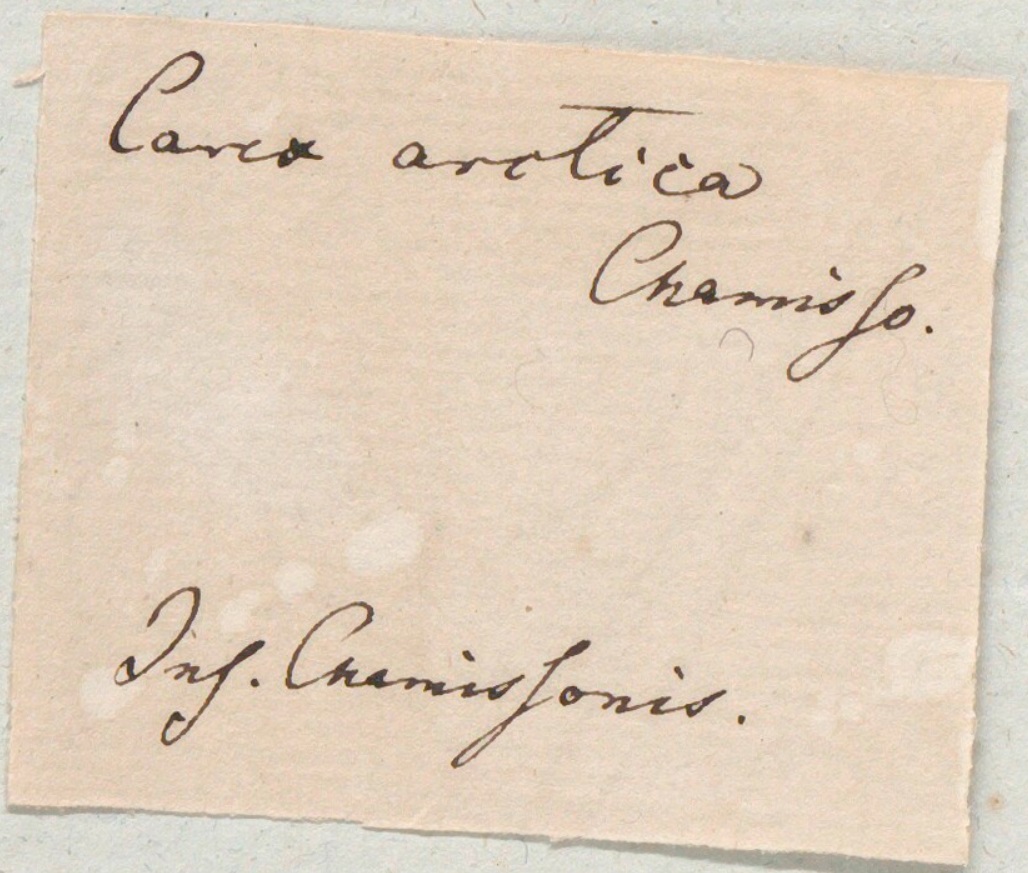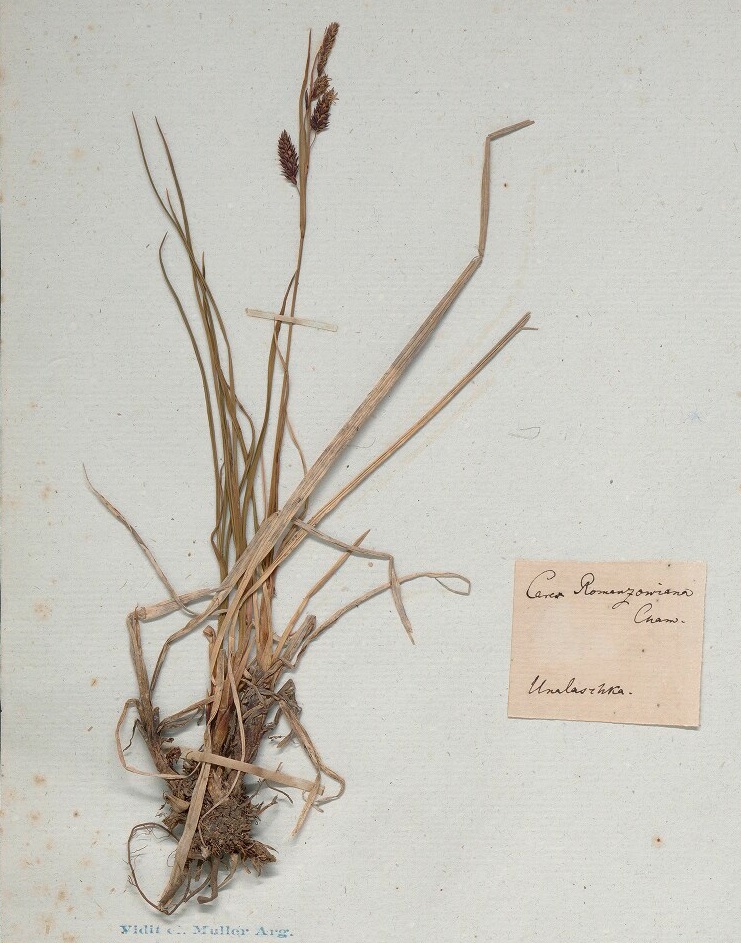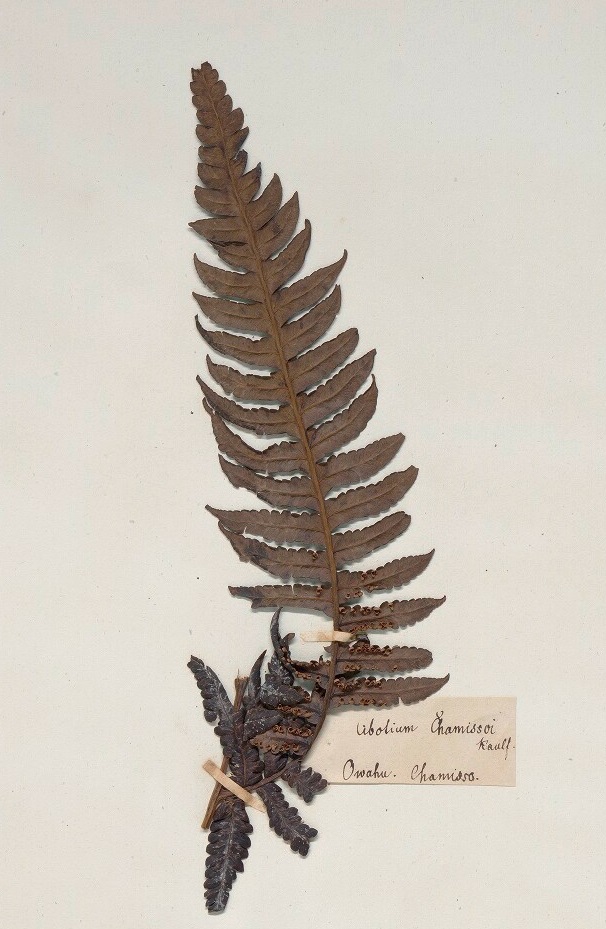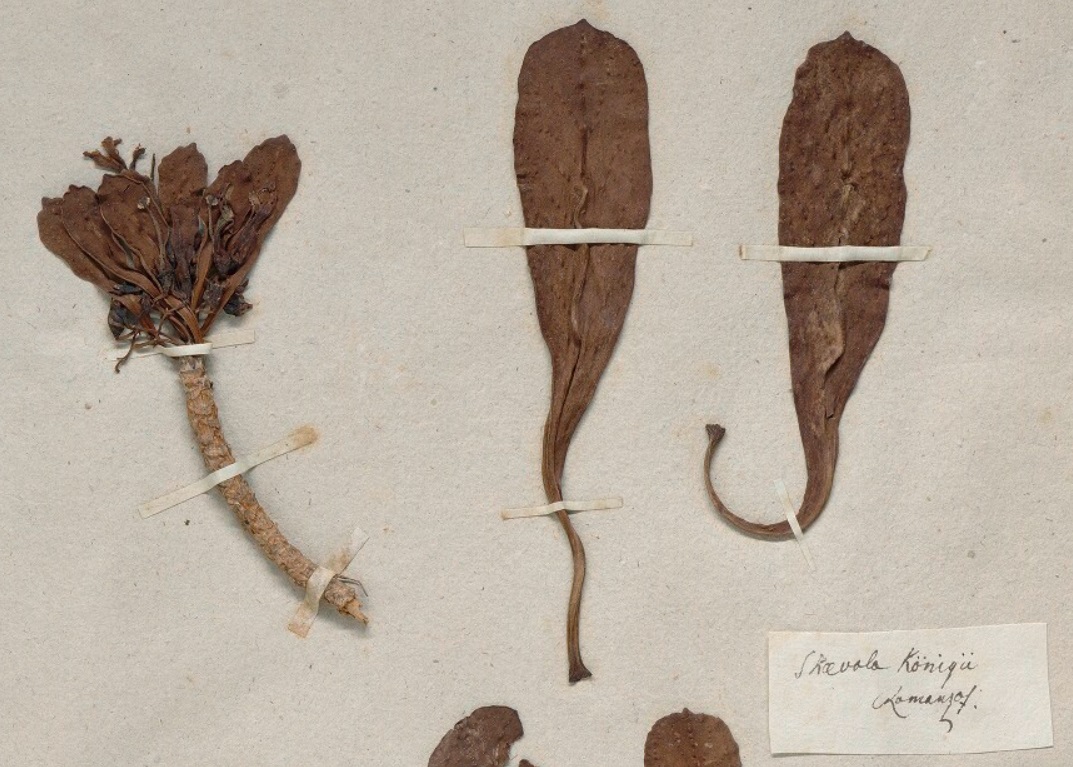[Science News] - The success of a failure: The Chamisso collection of the Van Heurck Herbarium
During the inventory and curation of Franz Wilhelm Sieber's herbarium (part of the Van Heurck Herbarium at Meise Botanic Garden), we recently uncovered a small but valuable collection of plants collected by Adelbert von Chamisso during the Russian Rurik expedition (30 July 1815 - 3 August 1818). Although the collection is modest with 82 specimens, it is of scientific interest because half of these are type material, mainly ferns.
The expedition, named after the ship Rurik, was organised and sponsored by Count Nikolay Rumyantsev (Romanzoff, Romanzof, Romanzov), Russian foreign minister at the time. The main objective of the expedition was to discover the Northwest Passage, a route from the Atlantic to the Pacific Ocean via northern Canada. Stories had circulated since the 16th century about this passage, which was supposed to be of great strategic importance to have direct contact from western Russia with the eastern part of the empire and Alaska, which was still Russian territory at the time. Indeed, routes across the Russian mainland were very difficult, time-consuming and dangerous, as were sea voyages via the Cape of Good Hope or the Strait of Magellan. Even a boat trip via the Arctic Ocean was not an option because at the time, some parts were barely ice-free for two months and icebreakers did not yet exist.
However, the expedition did not succeed in finding the Northwest Passage. It would take until 1906 until Norwegian explorer Roald Amundsen successfully traversed this route. Despite this ‘failure’, the Rurik expedition produced valuable scientific insights and discoveries. The Rurik's voyage went from St Petersburg, the Canary Islands, Brazil, Chile, Polynesia, Kamchatka, Alaska, San Francisco, Hawaii, the Philippines, the Cape and back to St Petersburg. There are specimens from each of these ports of call in the Sieber herbarium. During the voyage, over 400 islands in Polynesia and large parts of the west coast of Alaska were charted.
Adelbert von Chamisso (1781 - 1838) was a German writer and poet of the Romantic period as well as a botanist. He was of French origin (Louis Charles Adélaïde de Chamissot de Boncourt), but his family fled France after the French Revolution. Under the reign of Captain Otto von Kotzebue, he sailed with two other naturalists (Johann Friedrich Eschscholtz and Morten Wormskjold) a draughtsman (Louis Choris) and some soldiers on the Rurik, collecting and describing various plant species. He brought back 165 ferns, 77 of which were new to science. An island off the coast of Alaska was named after him. In 1833, Chamisso was appointed curator of the Herbarium of the Botanical Garden in Berlin.
 |
 |
 |
|
Carex arctica Chamisso. Collected on the island named Chamisso (Insulae Chamissonis). An unpublished name for a new cyperaceae |
Carex romanzowiana Cham. ex Steud. A cyperaceae dedicated to Nikolay Rumyantsev (expedition sponsor). Collected on the island of Unalaska (Aleutian archipelago). | Cibotium chamissoi Kaulf.(type specimen). An endemic species of tree fern from the island of Oahu (part of the Hawaiian archipelago) described by the German botanist Kaulfuss and dedicated to Chamisso. |
 |
 |
| Scaevola sericea Vahl collected on the island named Romanzov; current name: Tikei, island in the Tuamotu archipelago (French Polynesia). | Urtica ruderalis G. Forst. collected on Romanzov Island (Insel Romanzof, Südsee). F.W. Sieber manuscript. |
 |
| Chamisso described the flora on Romanzov Island as "very limited". He found just 19 different species of higher plants.“… Die Flora der Insel Romanzoff ist sehr beschränkt, Wir zählten nur 19 arten …“. Extract from Chamisso's logbook. |



